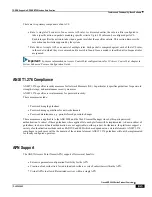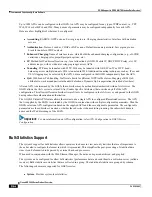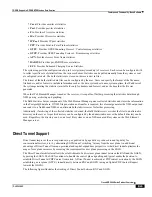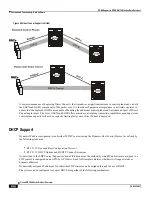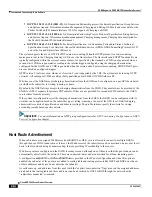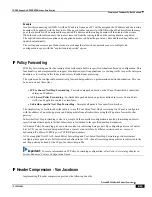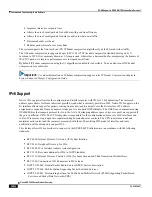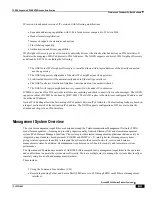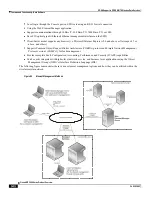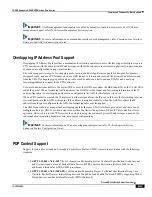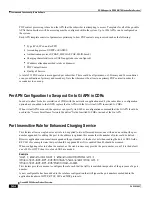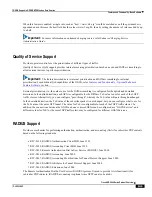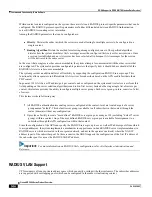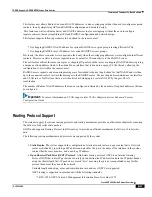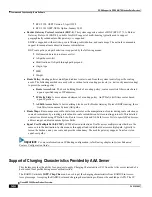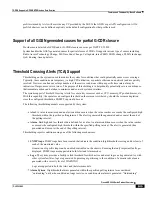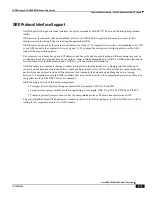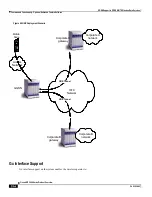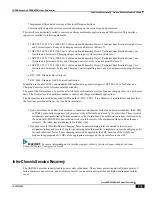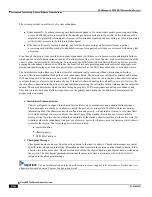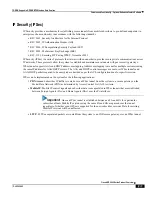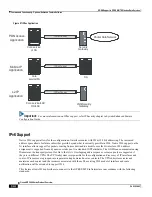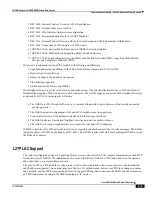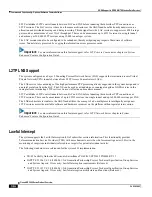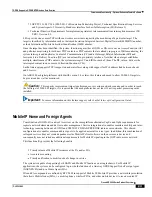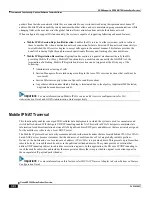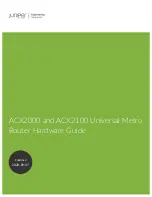
GGSN Support in GPRS/UMTS Wireless Data Services
Features and Functionality - Base Software ▀
Cisco ASR 5000 Series Product Overview ▄
OL-22938-02
This feature now allows Radius Server and NAS IP addresses to also overlapping without the need to configure separate
contexts, thereby simplifying APN and RADIUS configuration and network design.
This feature now allows Radius Server and NAS IP addresses to also overlapping without the need to configure
separate contexts, thereby simplifying APN and RADIUS configuration and network design.
This feature supports following scenarios to be defined in the same context:
Overlapping RADIUS NAS-IP address for various RADIUS server groups representing different APNs.
Overlapping RADIUS server IP address for various RADIUS servers groups.
Previously, the above scenarios were supported, albeit only when the overlapping addresses were configured in different
contexts. Moreover a static route was required in each context for IP connectivity to the RADIUS server.
The new feature utilizes the same concept as overlapping IP pools such that every overlapping NAS-IP address is giving
a unique next-hop address which is then bound to an interface that is bound to a unique VLAN, thereby allowing the
configuration to exist within the same context.
RADIUS access requests and accounting messages are forwarded to the next hop defined for that NAS-IP and it is then
up to the connected router's forward the messages to the RADIUS server. The next hop address determines the interface
and VLAN to use. Traffic from the server is identified as belonging to a certain NAS-IP by the port/VLAN
combination.
The number of Radius NAS-IP addresses that can be configured is limited by the number of loopback addresses that can
be configured.
Important:
For more information on VLAN support, refer
VLANs
chapter in
System Enhanced Feature
Configuration Guide
.
Routing Protocol Support
The system's support for various routing protocols and routing mechanism provides an efficient mechanism for ensuring
the delivery of subscriber data packets.
GGSN node supports Routing Protocol in different way to provide an efficient mechanism for delivery of subscriber
data.
The following routing mechanisms and protocols are supported by the system:
Static Routes
: The system supports the configuration of static network routes on a per context basis. Network
routes are defined by specifying an IP address and mask for the route, the name of the interface in the currant
context that the route must use, and a next hop IP address.
Open Shortest Path First (OSPF) Protocol
: A link-state routing protocol, OSPF is an Interior Gateway
Protocol (IGP) that routes IP packets based solely on the destination IP address found in the IP packet header
using the shortest path first. IP packets are routed ―as is‖, meaning they are not encapsulated in any further
protocol headers as they transit the network.
Variable length subnetting, areas, and redistribution into and out of OSPF are supported.
OSPF routing is supported in accordance with the following standards:
RFC-1850, OSPF Version 2 Management Information Base, November 1995
Summary of Contents for ASR 5000 Series
Page 1: ......
Page 26: ......
Page 48: ...New In Release 10 0 SCM Features Cisco ASR 5000 Series Product Overview OL 22938 02 ...
Page 50: ......
Page 58: ......
Page 68: ......
Page 126: ......
Page 138: ......
Page 146: ......
Page 218: ......
Page 236: ......
Page 356: ......
Page 374: ......
Page 422: ......
Page 496: ......
Page 572: ......
Page 654: ......
Page 700: ......
Page 726: ......
Page 784: ......
Page 816: ......
Page 844: ......
Page 906: ......
Page 926: ......
Page 942: ......
Page 943: ...Cisco ASR 5000 Series Product Overview OL 22938 02 Chapter 30 Technical Specifications ...
Page 966: ......
Page 972: ......

